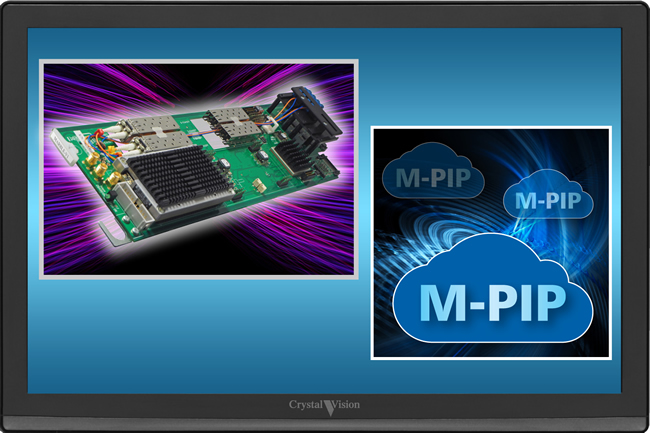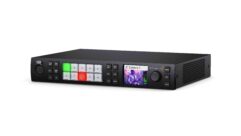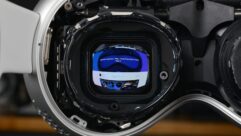
Crystal Vision has released the industry’s first dedicated picture-in-picture device. Designed for IP or SDI playout applications that need one or two picture-in-picture boxes to be inset on the main program, the M-PIP allows two input flows to be sized and positioned in advance and then layered over either the third input flow or an internal matte generator. The M-PIP can be used with IP (SMPTE ST 2022 and ST 2110 video), with SDI or with both IP and SDI at the same time, and is a software app that runs on the MARBLE-V1 media processor hardware, a card housed in the Vision frame which features a powerful CPU/GPU processor and both SDI and 10GbE IP network interface connections. Picture-in-picture functionality has previously only been available as part of some production switchers, channel-in-a-box systems and master control switchers. As a dedicated double box generator, the M-PIP therefore provides a cost-effective solution for those who only require picture-in-picture functionality, while it can also be used to add extra capability to a standard playout or studio system.
Up to two boxes can be inset on the program or matte background when required, either by selecting the required foreground flow source or by using preset recall. Controls are available to independently size and position the two boxes on the screen, as well as to manipulate the size and position of the images inside those boxes. A colored border, as well as edge softness, can be applied to each box if required. The boxes can be faded up and down, while the background can be faded out to black. The M-PIP provides 16 presets which can be used to create and store different looks for the boxes and then be recalled by using Crystal Vision’s ASCII or JSON protocols in conjunction with the broadcaster’s own control system, or alternatively by using the company’s VisionWeb control software.
Each of the three inputs has an individual test pattern generator, which can be helpful during setup if video flows are not available. In-built scaling allows the M-PIP to be used with mixed input flow formats – for example, SD boxes can be overlaid on to an HD background flow if required. The two independent outputs can show the composite picture or any of the input flows. The M-PIP includes a framestore synchronizer timed to an external Black and Burst or tri-level syncs analog reference or PTP, with fail-over options. Ten frames of flow input video delay (adjustable in one frames steps) allows delay compensation between the background source and the two foreground sources, while ten frames of flow output video delay allows compensation for any big system delays. Comprehensive SDI, IP and PTP monitoring information is available and can be used to generate SNMP traps.
The M-PIP’s support for multiple signal formats gives the easiest possible SDI to IP upgrade, while also making it perfect for mixed SDI and IP installations as well as fully IP or fully SDI environments. Its gateway functionality can be used to integrate SDI into an IP environment or IP into an SDI environment. Its IP to IP translation functionality can be used for network address translation, protocol conversion between the input and output formats, unicast to multicast address conversion and the creation of media firewalls. The IP flows can be separated and protected across up to four bi-directional 10GbE SFP+ network interfaces. It includes output traffic shaping and is tolerant of any input packet distribution.
Explained Crystal Vision’s Managing Director, Philip Scofield: “The M-PIP is a great example of the apps that Crystal Vision can develop for MARBLE-V1. It was originally created for a large individual application where it provided the only video processing required. However, its flexibility means it can be used in many applications, either on its own or to add functionality when using other equipment.”
Based at Whittlesford near Cambridge in the UK and with an office in the USA, Crystal Vision provides a full range of interface and keyers and helps people transition through a range of technologies – from SD to HD, from HD to IP and from IP to IP.










